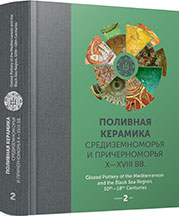Immured Vessels in the Church of Panagia Eleousa, Kitharida, Crete
Immured Vessels in the Church of Panagia Eleousa, Kitharida, Crete
Author(s): Anastasia G. Yangaki
Subject(s): History, Archaeology, Cultural history, Architecture, Middle Ages, 15th Century, History of Art
Published by: Издательский дом Stratum, Университет «Высшая антропологическая школа»
Keywords: Crete; Kitharida; 15th c.; church; donor; immured vessels; imported glazed pottery; Late Byzantine pottery; “RMR Ware”; Maiolica; Spanish lustreware; pottery from Syria and Egypt; bacini
Summary/Abstract: The paper focuses on the detailed presentation of the numerous vessels which are immured in the main wall of the narthex of the church of Panagia Eleousa. The church is located to the north of the village of Kitharida, southwest of Herakleion (Crete). Given their number, their state of preservation, the various categories of pottery to which they belong which were imported from regions of the western and eastern Mediterranean, the particular interest in their disposition and possible hidden symbolic meanings behind their decoration, the vessels constitute one of the most representative groups of bacini immured in Cretan churches. This is corroborated by comparison with the immured vessels from other sites in the Herakleion prefecture and based on the data collected by the research programme focused on bacini in Greece implemented by the National Hellenic Research Foundation in collaboration with the local Ephorates of Antiquities from other Cretan churches.Their detailed study contributes to the history of the church and to the presentation of the types of pottery that were in circulation on the island in the 15th c. AD. Some of these bacini were produced in Byzantine workshops, while most belong to glazed categories imported from the Iberian and Italian peninsulas or the Near East. Special reference is made to their seemingly careful disposition, which would have required specific planning. This observation, combined with the particular decoration on some vessels, which seems to incorporate symbolic meanings, leads to suggestions as to the possible donor who played the leading role in this decoration.
Book: Поливная керамика Средиземноморья и Причерноморья X—XVIII вв.
- Page Range: 135-164
- Page Count: 30
- Publication Year: 2017
- Language: English
- Content File-PDF

